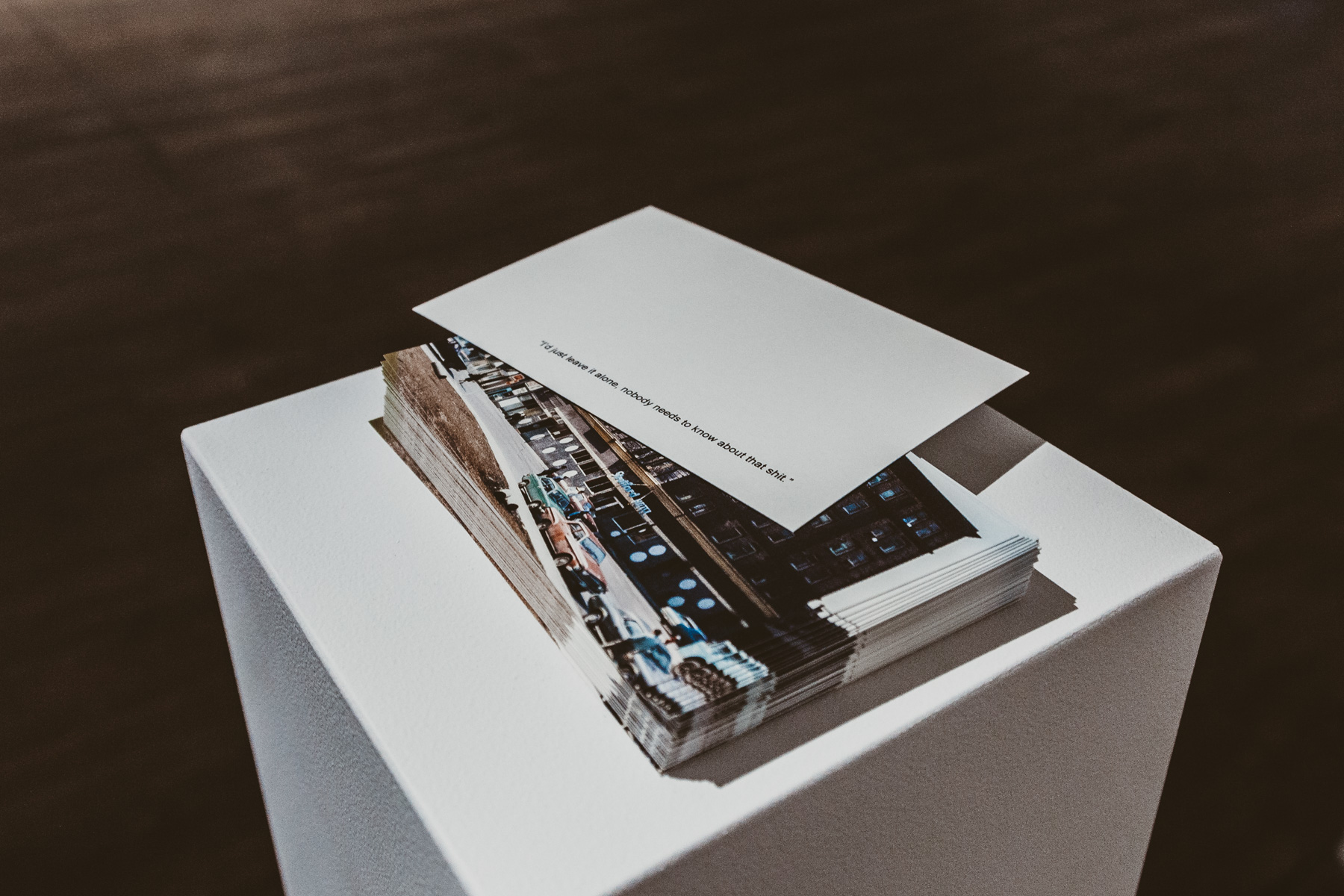A Harlem Nocturne presents the reflection of an Afro-Canadian artist Deanna Bowen
Consisting of research compiled in Vancouver and Toronto over the last four years by interdisciplinary artist Deanna Bowen, A Harlem Nocturne brings elements of the past to light that are still relevant in today’s society. Bowen exposes material that reveals Black experiences that tend to be forgotten via video footage, archival documents, and even some of Bowen’s own family experiences, which she shares through personal videos and photographs. The exhibition is held at three artist-run centres on 4001 Berri St.: OBORO, Ada X and Groupe Intervention Vidéo (GIV).
Curated by Kimberly Phillips, a Vancouver-based educator and curator, the exhibition is divided into two different spaces. Each space shares elements of Bowen’s research work to the public. When entering the building, the sound of a trumpet can be heard; immediately visible is a projection named A quick riff, 2020 that was produced in residency with OBORO, an art production centre, with the help of Charles Ellison who specializes in Jazz Studies at Concordia.
On the second floor is Ada X, a bilingual feminist artist centre. This area presents three different choreographic transcriptions, Gibson Notations 1,2 and 3, 2019 , exhibited in lightboxes on the walls. Each one displays a different dance that was created by dancer and choreographer Leonard Gibson. These dances were originally performed in CBC’s 1955 variety show Eleanor. The show was hosted by famous jazz singer Eleanor Collins, who was the first Afro-Canadian woman to host a national broadcast television series.
These three choreographic transcriptions can be visualized in the darker space of the gallery alongside Gibson Duets, 2018. Reproduced by Vancouver-based dancers Justine A. Chambers and Bynh Ho, the piece is a re-animation of Gibson’s original dances that were performed on the show.
“[Bowen] was quite interested in trying to pull [the choreographies] out of the archives and have them live in another form,” said Phillips.
OBORO is located on the third floor. A small room in front of the entrance displays a four-channel video installation named On Trial The Long Doorway, 2017/2019. The piece is a re-creation of a 1956 CBC tele-drama The Long Doorway, the story of a Black lawyer who represented a white student from the University of Toronto that was charged for assaulting a rising Black basketball player. Bowen’s great uncle, Herman Risby, played a supportive role, but no recordings of the tele-drama were found.
Fortunately, Bowen was able to use the original script and invited five Black Toronto-based actors to reinterpret the story. Viewers can see the actors engage with the script as they rehearse.
Moving on to the next larger room of the gallery is more of Bowen’s research. The room shows multiple works displayed on each wall, every single one of them informing the public about the presence of Black bodies in a settler colonized land. Some of these works exhibit Bowen’s own family experiences, where some family members were part of the entertainment industry.
A cast photograph of Vancouver’s Theatre Under the Stars from Finian’s Rainbow, circa 1953 depicts Bowen’s great uncle Herman Risby, and Risby’s first cousin Leonard Gibson. Both can be seen on the second row to the right in the company of jazz singer Eleanor Collins in the first row on the right.
“The photograph serves to remap places where Black people performed and make them visible in this community,” said Phillips.
Give Me Shelter, 2011/2019 is a workbook transcribing an interview with Bowen and her mother, where her mother speaks of her experience with racial violence growing up in Vancouver. A picture of Bowen’s grandfather can be viewed in the open book. Bowen’s grandfather was a preacher who once had to give spiritual guidance to a young Black man who was convicted of murder and sentenced to death; an uneasy situation for him.
Another interesting work is a screen print titled The Promised Land, a reference to an episode from a 1962 CBC television series called Heritage, that told the story of a Black community that escaped racial violence and segregation in the United States who settled in northern Alberta at the beginning of the 20th century, only to experience the same anti-Black racism in Canada.
“She reminds us that even seemingly insignificant documents can be rich repositories for unintended readings, and for questioning who has been charged with writing our histories and why,” said Phillips.
The exhibition provides visitors a map of the exhibition with descriptions of each work that are numbered. Reservations can be made online.
A Harlem Nocturne is on display by Ada X, Groupe, Intervention Vidéo (GIV), and OBORO at 4001 Berri St. until Oct. 17, 2020.
Photos by Alannah Morrison




